PandemiDiarios 2022: Stories of Resiliency
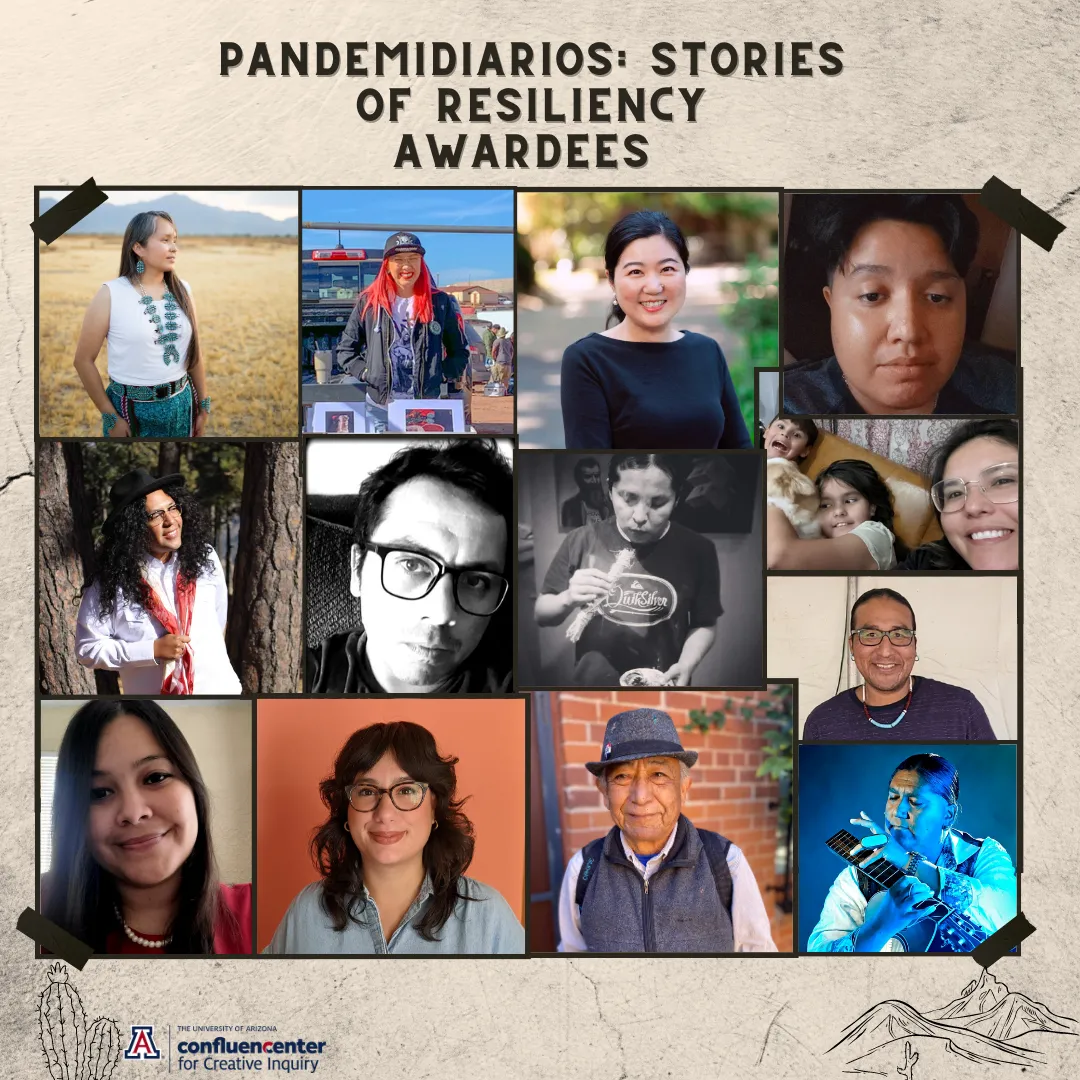
Confluencenter for Creative Inquiry invites proposals for PandemiDiarios, a microgrant program to support community-based artists and practitioners, students, and academic professionals from surrounding Native American communities living on and off tribal lands and underrepresented groups in Arizona to produce creative works reflecting on human experience of the current COVID-19 pandemic.
The term pandemidiarios comes from blending “pandemic” and “diarios” (diaries). Diarios are where the stories of ourselves are written. They are where we express our frustrations, hopes, and visions for the future. For some it is a therapeutic process, and for others a way to capture the moment or keep a record of day-to-day life.
In this current round, the concept of PandemiDiarios emerges as a response to these day-to-day human moments, experiences, reflections, and creative responses during the COVID-19 pandemic, especially for those who have been disproportionately affected. Racial and ethnic minorities; the elderly; health, service, and other essential workers; along with socioeconomically disadvantaged members of our community facing the worst of this crisis. PandemiDiarios is thus an attempt to center these experiences from the perspective of those who live them. This year’s theme will focus on the concept of capturing stories of resiliency that defined Native people and underrepresented groups for centuries. For generations, Native people and underrepresented groups have relied on their strength and traditions to help them navigate hardship. Despite the challenges, Native people have carried stories, wisdom, language and traditions of their ancestors and have share them with families. The traditions that hold deep meaning are continuing, just in different ways. For example, social media has been a way to stay connected, there were virtual powwows, selling arts and crafts online, and essential food and supplies were delivered to communities. These are just a very few examples that people have been able to remain resilience in different ways.
The first round of PandemiDiarios microgrant projects, produced over the summer of 2020, reflected and interpreted the human experience of the COVID-19 pandemic from underrepresented perspectives. The second round reflected on the same concept with an emphasis on the experiential intersections of the pandemic with life on the U.S.-Mexico border. We have been able to culminate thirty-five artists who have shared their experience of living through the times of uncertainty. Both final projects can be found here – PandemiDiarios and PandemiDiarios on the Border.
In partnership with University of Arizona Libraries’ Special Collections, we have been able to archive the digital versions of all creative work supported by this program in the Family and Community Archives. This “digital museum,” will be freely available to the public in perpetuity.
Congratulations 2022 PandemiDiarios awardees:
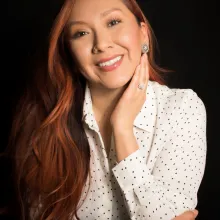
Yá’át’ééh! Shí éí Alyssa Peaches - Armendez yiníshyé. Tsénjíkini nishłi, Tsédééshghízhníí bashíshchíín, Nááshghalí Diné éí dashícheíí, Tł’ízíłání éí dashínálí.
Alyssa “Peaches” Armendez is of the honeycombed rock people, born for the rock gap people. Her maternal grandfather is Mescalero Apache, and maternal grandfather is Manygoats. She was born and raised in Tuba City, Arizona. She is a wife and mother of twins, a photographer and cosmetologist. Her project is going to be focused on how Covid affected her community, her family, and herself myself, through the lens of her camera.
These captured images are going to be focused on how Covid affected my community, my family, and myself. I am a self taught photographer, I’ve always loved capturing moments that people seem to miss.
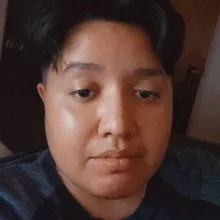
Monique Murrieta was born in 1989 in Phoenix, Arizona and studied art in Tucson at the University of Arizona, where she received her Bachelor of Fine Arts degree in Painting and Drawing. After a decade of odd jobs to make ends meet, and feeling the burnout in her attempted career as a public school teacher, she began filling a sketchbook with black ink pens at her desk. With this renewed inspiration, and a side project co-curating a student art showcase for Día de los Muertos (2021), Monique returns to her roots and influences growing up in the Millennial era. Her work reflects a deeply American experience, with iconography and cultural references as well as the critical lens of a butch Xicana.
This is a series of ten multimedia drawings exploring the mental health struggles of teachers, particularly those with marginalized identities, and changes in consciousness on the topic of public education brought about by the COVID-19 pandemic.

Magda Mankel is practicing anthropologist and trained ethnographer with a doctoral degree in anthropology. Most recently Magda lived in Arivaca as she instructed a historical archaeological field school in Ruby; the ghost town located just south of Arizona. Magda has also worked with a public health team based at John Hopkins University to gather stories about COVID-19. Magda is a southern Arizona native, born in Nogales, Arizona to a mother who migrated to the U.S. through clandestine means and a Mexican-American father whose family arrived in Arizona in the late 1800s to work in the mines.
The intention of this project is to use oral history and photographic portraiture to document the ways in which the community members of the rural town of Arivaca, Arizona have adapted to the restrictions imposed by the COVID pandemic.
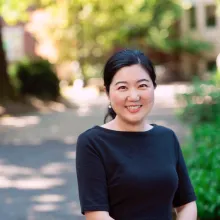
Jinhui Wu (GIN-Hway) is an academic professional and artists living in Tucson. She graduated from the University of Arizona with a doctorate in East Asian Studies and a focus on Chinese literature in 2021. She received her M.A. degree in Asian Languages and Civilizations from the University of Colorado, Boulder in 2016. China's strict COVID policies have separated Junhui from her family for more than three years. Aside from teaching and conducting research, she has been involved in the creation of art. Jinhui was a 2020 recipient under the PandemiDiarios program for her calligraphy work. Visit her website to learn more about her work here.
This project intends to present one or more papercut(s) depicting the resilience of Asian women in Arizona during the pandemic.

Gabriel Ayala is a composer and classical guitarist, performing music across several genres including classical, jazz, and Ayala’s signature “jazz-menco”. A member of the Yaqui people of southern Arizona, Ayala performs regularly throughout in U.S. Gabriel has been breaking stereotypes amongst Native and non-Native people by performing classical music, jazz, flamenco, and new compositions of his own. Ayala is pleased to share his newest healing works, composed during the pandemic quarantine, with his international audience.

Derrick Gonzales is a student and artist at the Tohono O’odham Community College. His traditional name is “Deersinger”, he is part Pascua Yaqui and Pima Maricopa.
As a child Derrick has always been fascinated with the world and nature. He says his family always saw him with a pencil or markers in his hand drawing figures and what he saw at traditional ceremonies. Derrick states “I want to express myself through my artwork, explain a little of what I know and learned, show examples of what the people did and the skills they had. Exercise the mind to push one another for the future for our little ones and pay respect to the ones that were here before us.”
This project is an abstract collage on canvas showing the emotional inference that most of us felt mad, happy, sad, joyful and shine light on hope, prayer, gratitude that we all had to go through this huge problem alone, but at the same time we are all in this together. We can't give up on faith, stand stall, move forward and open the mind and heart for new opportunities. Just like this pandemic problem, we we're stuck for a little while.

J. Stanley is a member of the Navajo tribe and has been painting for 5 years with a spray paint medium. She enjoys encompassing Navajo designs, Diné way of life, history and teachings in her paintings.
She grew up on the Navajo reservation in Kayenta, Arizona, near Monument Valley Tribal Park. J uses the Monument Valley landscape in a variety of ways in her paintings as tribute to her "backyard", where her father's side of the family is from. She now resides in Phoenix, Arizona. Her project covers the relationship between her and her mother during the pandemic and what has transpired since.
This painted project and its objectives are in relation to the intersections of the COVID-19 pandemic in the surrounding Native American communities living on and off tribal lands and underrepresented groups in Arizona.
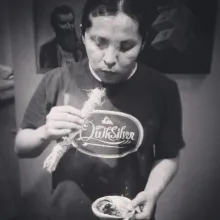
Julius grew up on the Navajo Indian Reservation until the age of 13 and later moved to south Phoenix. Most of his life has consisted of traveling between the valley and the “Rez”. After college, he was a community organizer and an artist. During the pandemic, Julius lost his parents in 2021 and himself continues recovering from having had COVID. In his project, he plans to interview Indigenous peoples living on and off the “Rez” and ask about their life experiences amid the pandemic. His project will result in painted portraits and collages which will represent the strength and resiliency of his community.
Azhdiltl'is is the title of this protect, it is a Navajo teaching. Translation is sometime only a guesstimating as much is loss in the process of translation, Azhdiltl'is means to prepare oneself for hardships in life. Making yourself solid, strong, and not just physically but also mentally strong. It is also about wellness.
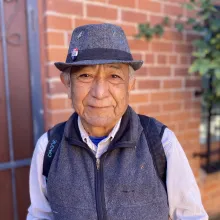
Alex grew up in a small rural community of Klagetoh Arizona on the Navaho nation and has lived in Alaska for 11 years working with indigenous youth in Juneau and Anchorage. Moving to Tucson in the early 1990’s, Alex worked with indigenous youths in the TUSD Native Education Programs and spent time teaching Navaho culture in Native American movies for tv in the 90’s. Alex has also served as a board member for the Tucson
Indian Center.
The concept of the piece is that we all are plants and our people have traveled upwards to the emergence. As we went through the different stages, we encountered different events, we call monsters. The final piece will be in photographs and also an audio in my voice.
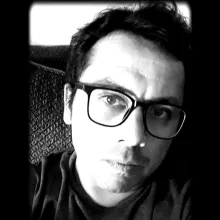
During the pandemic, Jorge served as co-chair of The Literary and Cultural Studies Working Group. There he develop monthly activities with groups of international students, participated in groups of new masculinities inside and outside of Arizona and collaborated in creative writing workshops.
Jorge is currently in the third year of his doctorate program at UA in cultural studies and is working on his thesis with an emphasis on fatherhood and new masculinities in contemporary Mexican poetry.
This project consists of seven poems that explore the theme of parenthood and migration in a period not
exceeding 7 months.
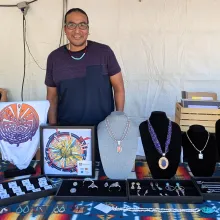
Quinton is a Tohono O’odham/Kiowa multimedia artist who was born and raised in Sells, AZ on the Tohono O’odham reservation. After receiving his Bachelors in Fine Arts from The University of Arizona in 2015. He has worked as Licensing Therapeutic Foster Care Coordinator in Tucson, Arizona where he has resided for the last 14 years. In 2021, Quinton decided to pursue a Master’s of Social Work (MSW) program at Arizona State University. Quinton attends school full-time as a MSW graduate student, and works full-time as a social worker. His work (academic and professional) incorporates cultural therapeutic approaches to help high-risk teens and children with behavioral health disabilities. As an artist, Quinton prefers the medium of Silversmithing.
Quinton creates 3D and 2D pieces with different mediums and methods that are both tangible and conceptual in nature inspired by traditional designs and craft elements of his Native American culture. In addition, he is currently assisting Professor Dr. Ignacio, who is also a member of the Tohono O’odham Nation, with a survey detailing the effects of Covid-19 pandemic among the people living on the Tohono O’odham reservation. This study will be the first study on O’odham people done by O’odham’s. Overall, Quinton is considered successful in his ability to combine his
two passions in his life, helping others and creating art.
This project will use sterling sheet metal to cut an intricate maze design. The heart pendant will be approximately 2.5 inches in length by 2 inches wide in diameter. I will incorporate a bezel setting that would hold a turquoise stone on the bail.
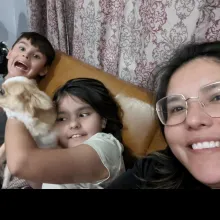
Millicent Michelle Pepion is a mother, Bitter Water born for the Blackfeet Nation. Born in Tuba City, Arizona, but was raised primarily in Mesa where she had two children, Lila Mavis and Choctaw Leonard Lowery. Millicent and her family reside in Tucson as she completes her PhD program in American Indian Studies at The University of Arizona.
This digital photo collage tells the story of how a single mother in a PhD program, along with her two small asthmatic children, and annoyingly magical chihuahua, survived one of the deadliest plagues of our time.
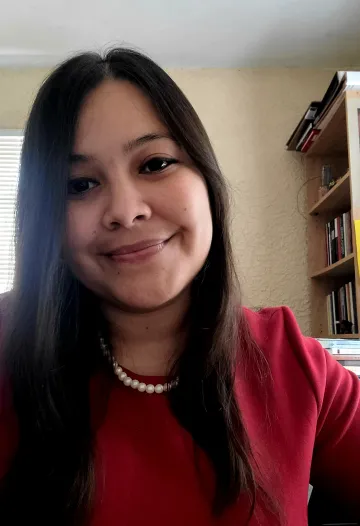
Romy Ceron Canche is originally from Mérida Yucatán Mexico. At 26 years
old, she moved to the United States to pursue a master's degree in
Spanish literature at the University of El Paso Texas (UTEP) and later decided
to pursue a Ph.D. in Spanish literature at the University of Arizona. Studies
in literature have given her the opportunity to study and understand border
and subaltern studies in terms of race, gender, and even history.
This essay aims to present and expose the scope that a person infected with Covid-19 experienced during confinement in the year 2020-2021. The real history of Mr. Mario Alberto Cerón Pacheco will be transferred to the fictional element to create a narrative that describes the process and the scope of the disease.

